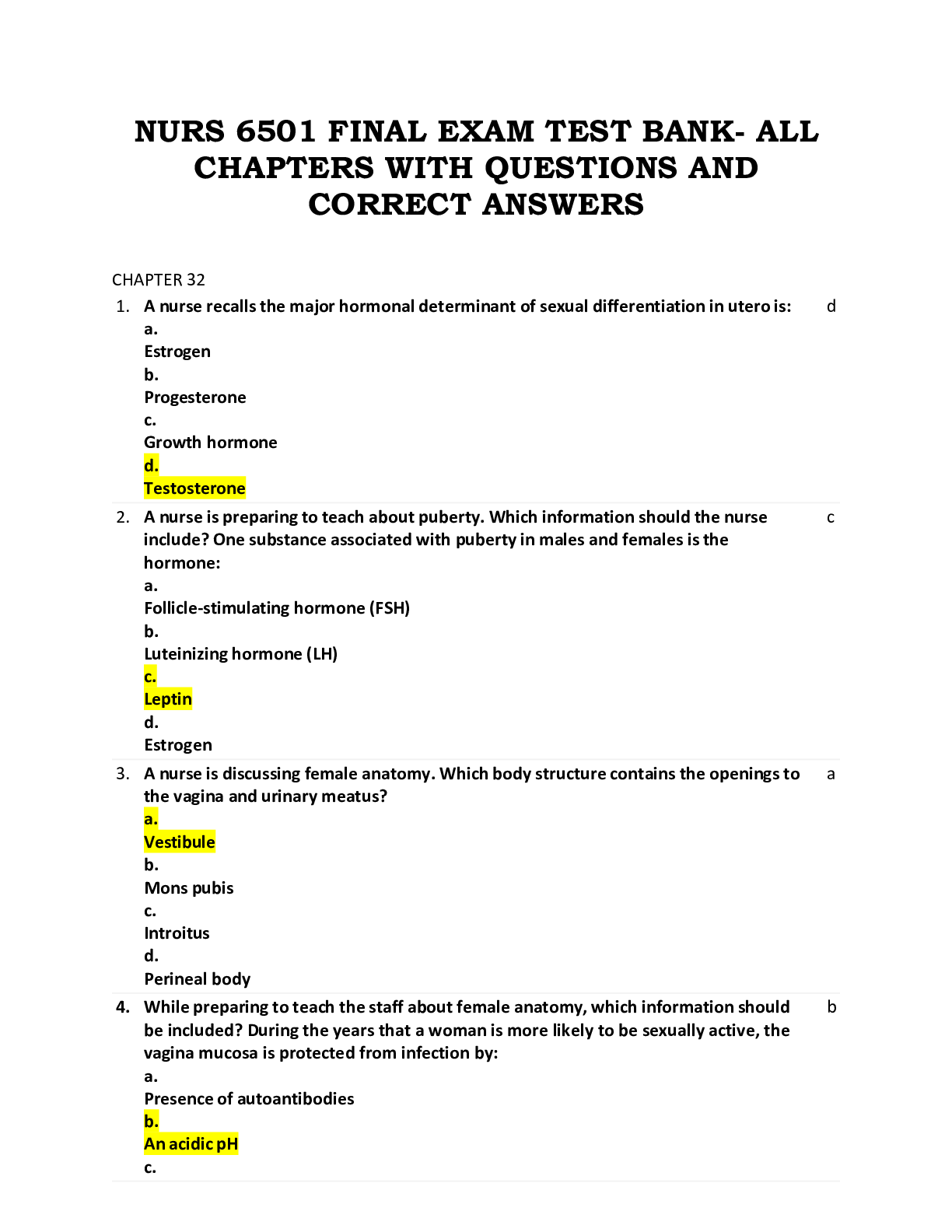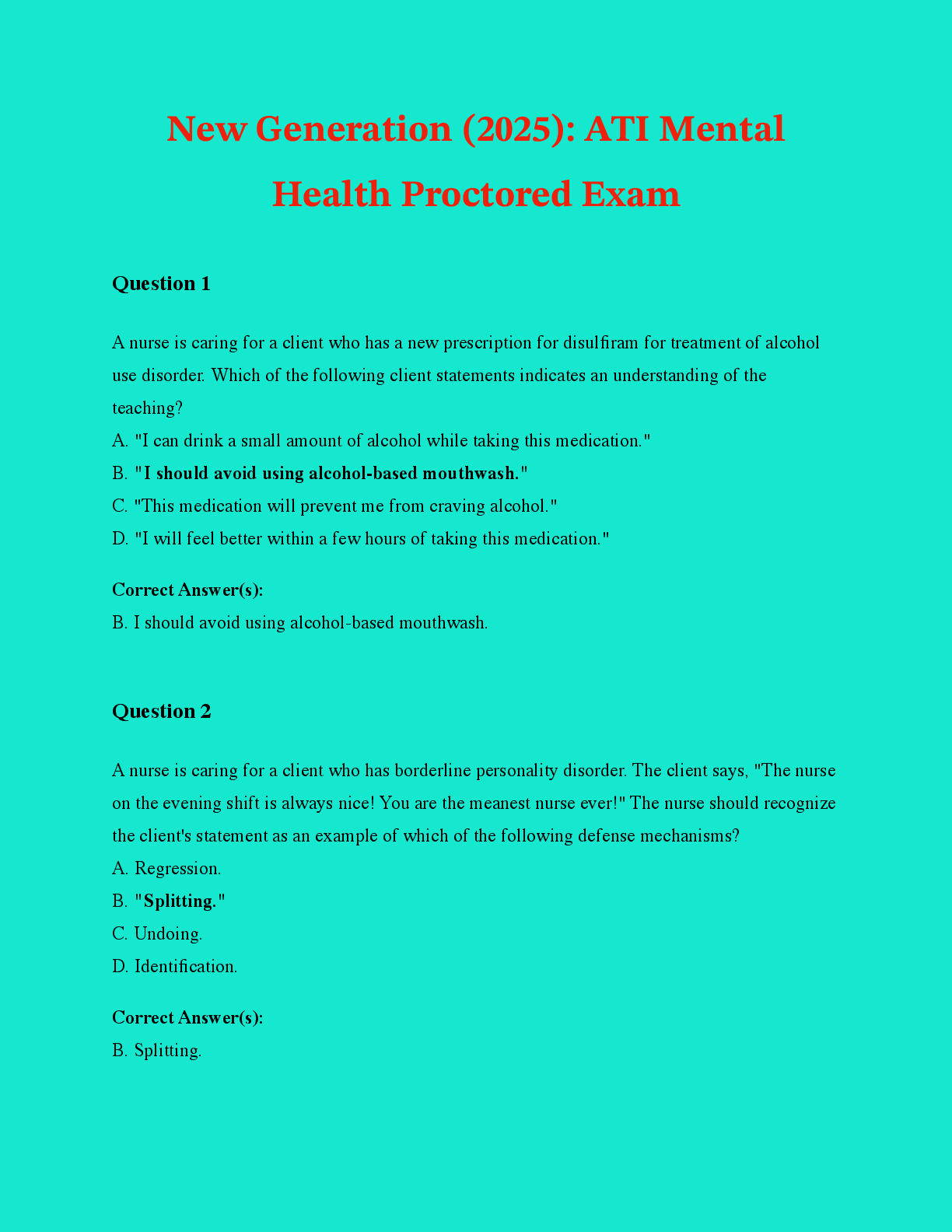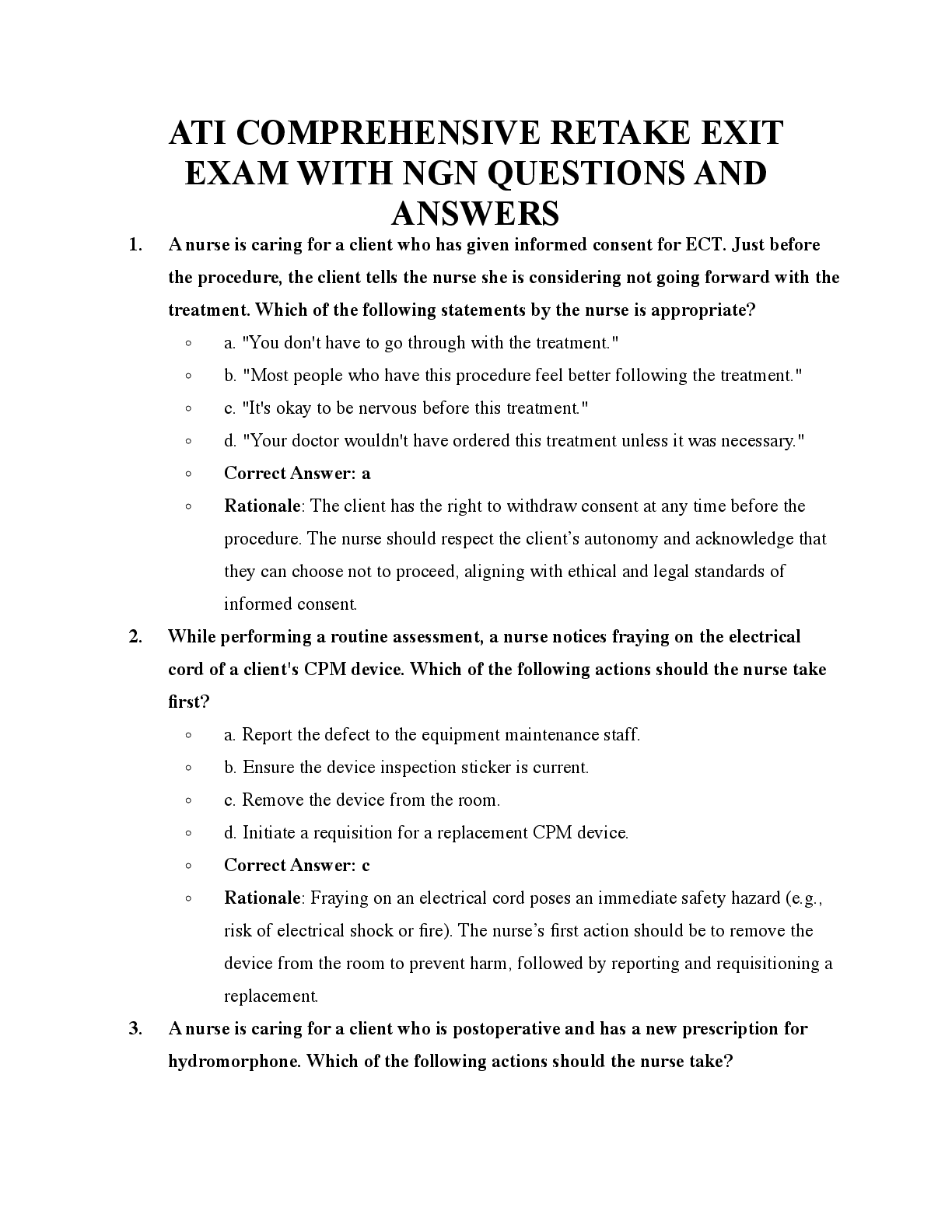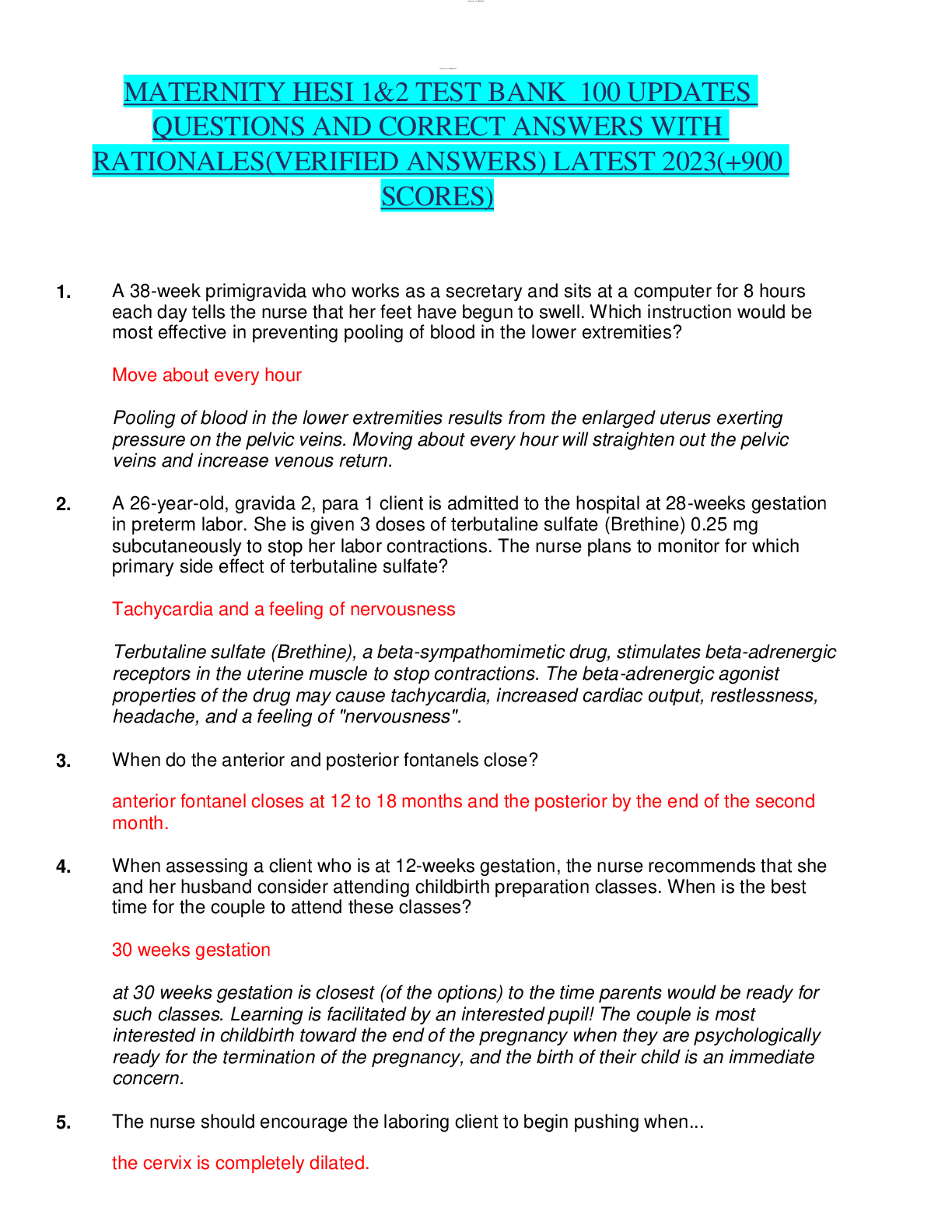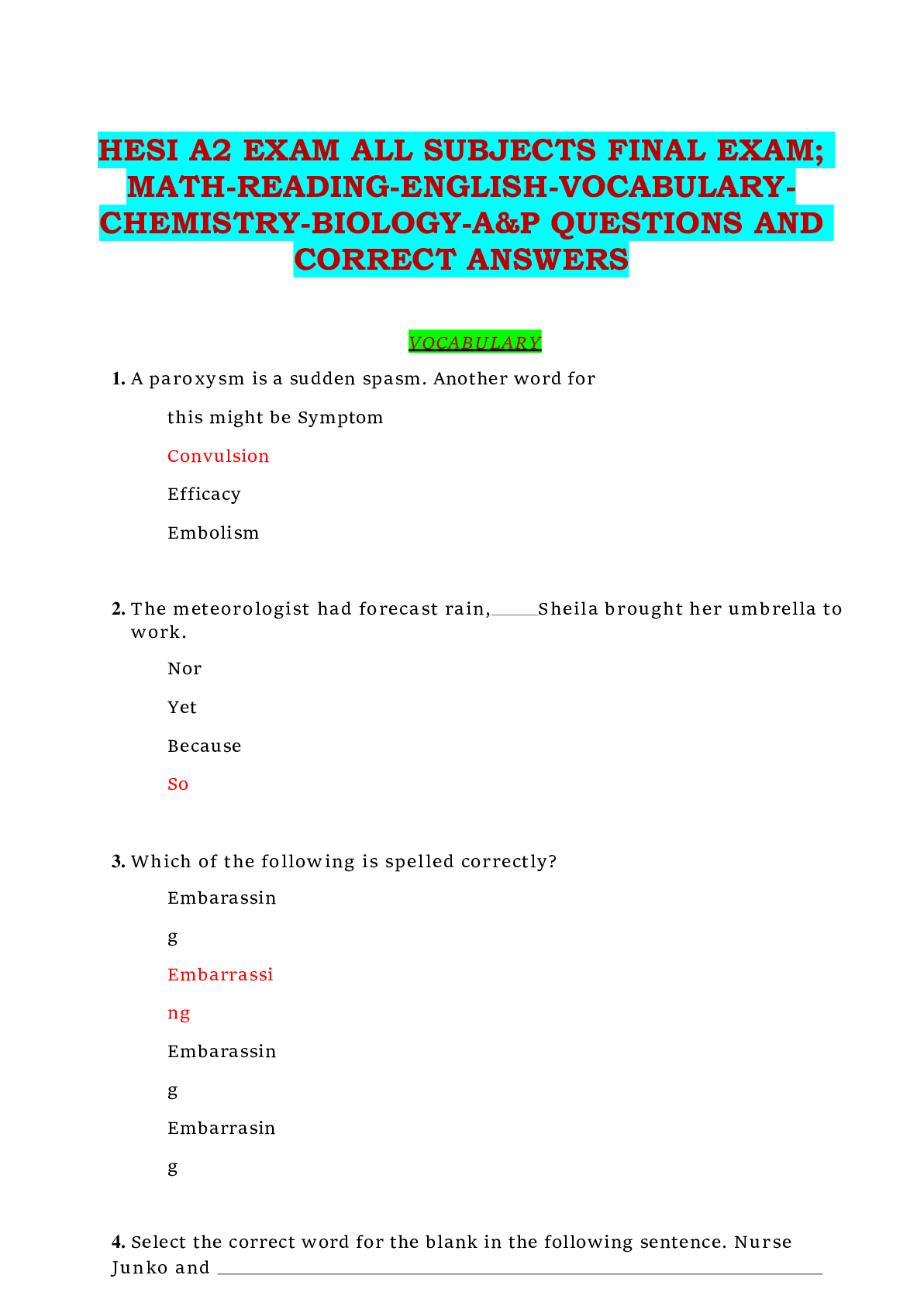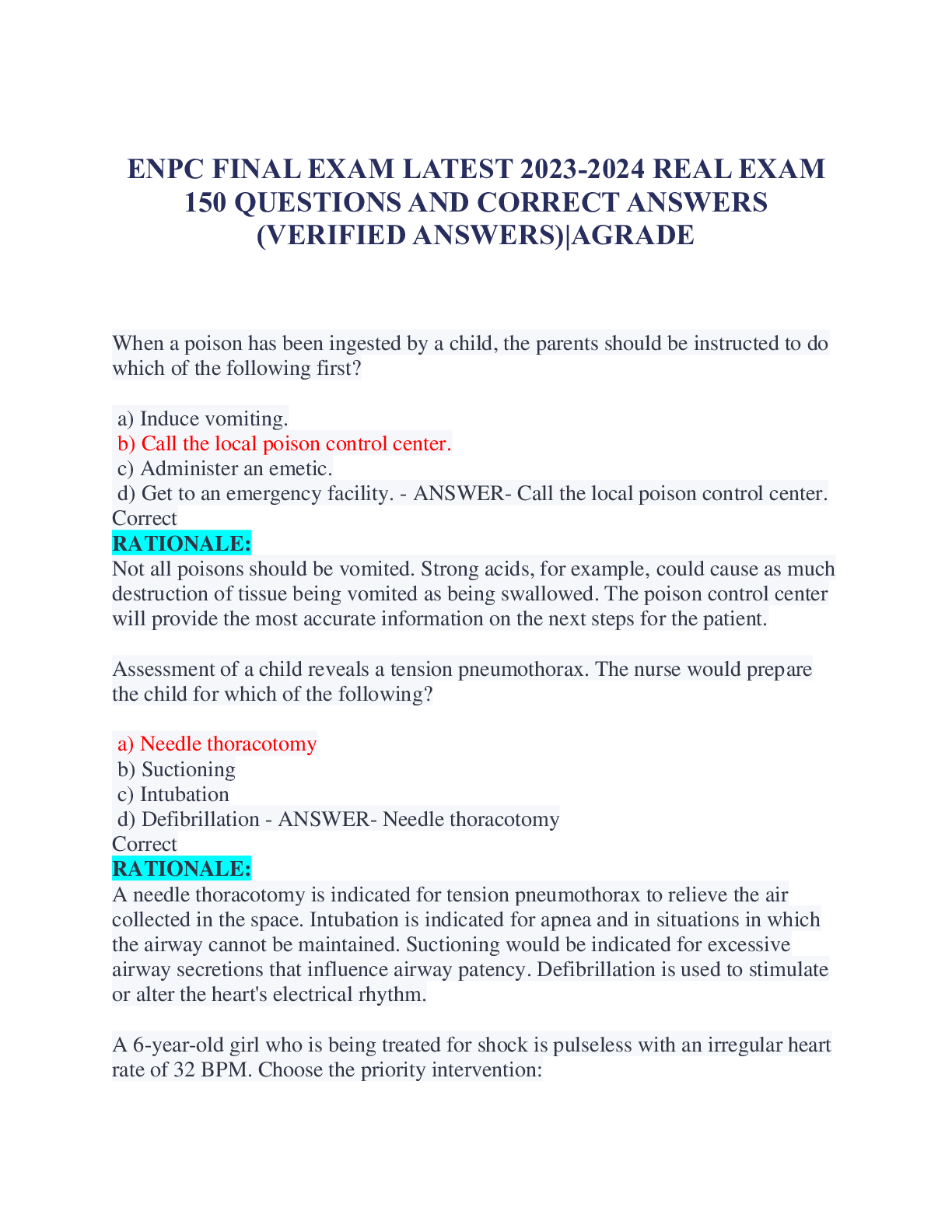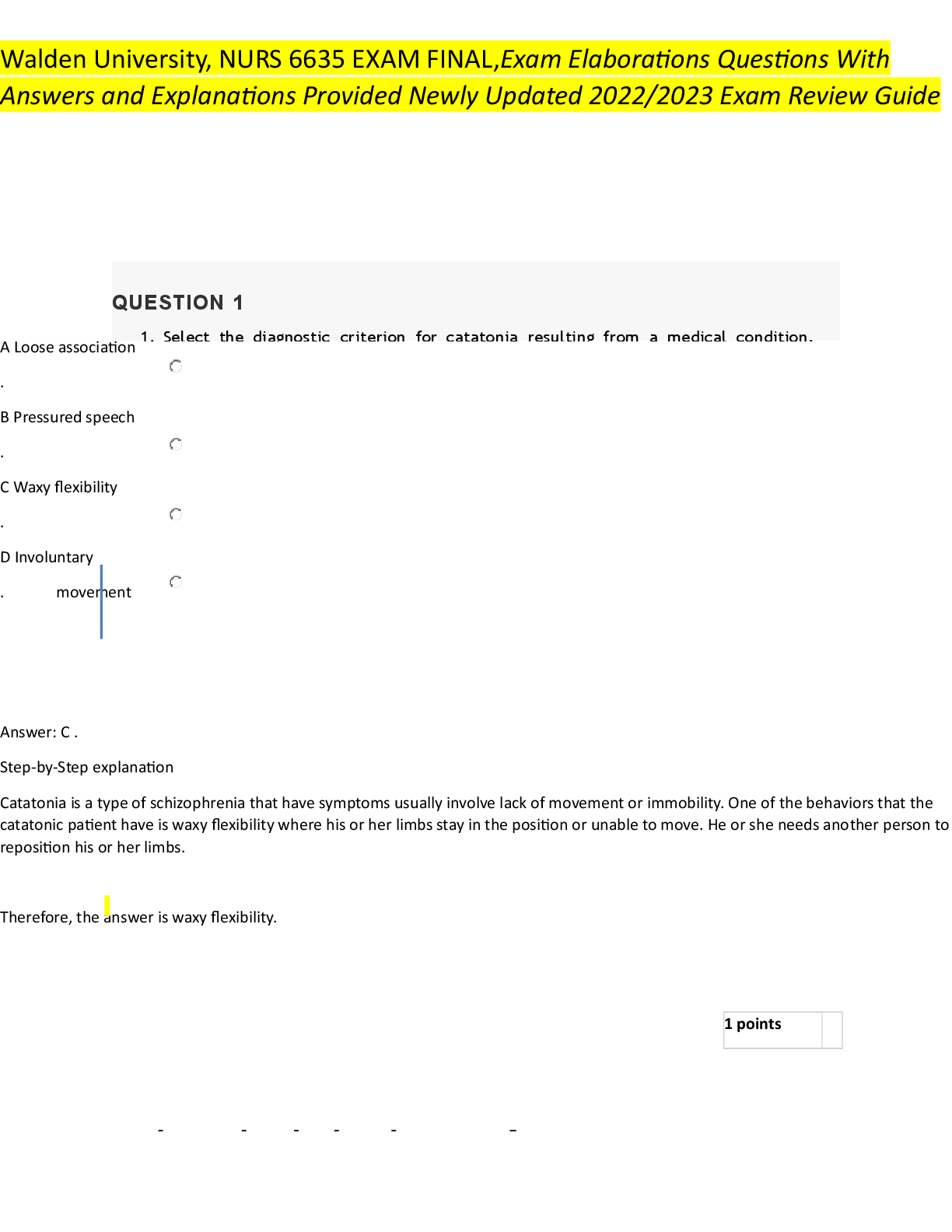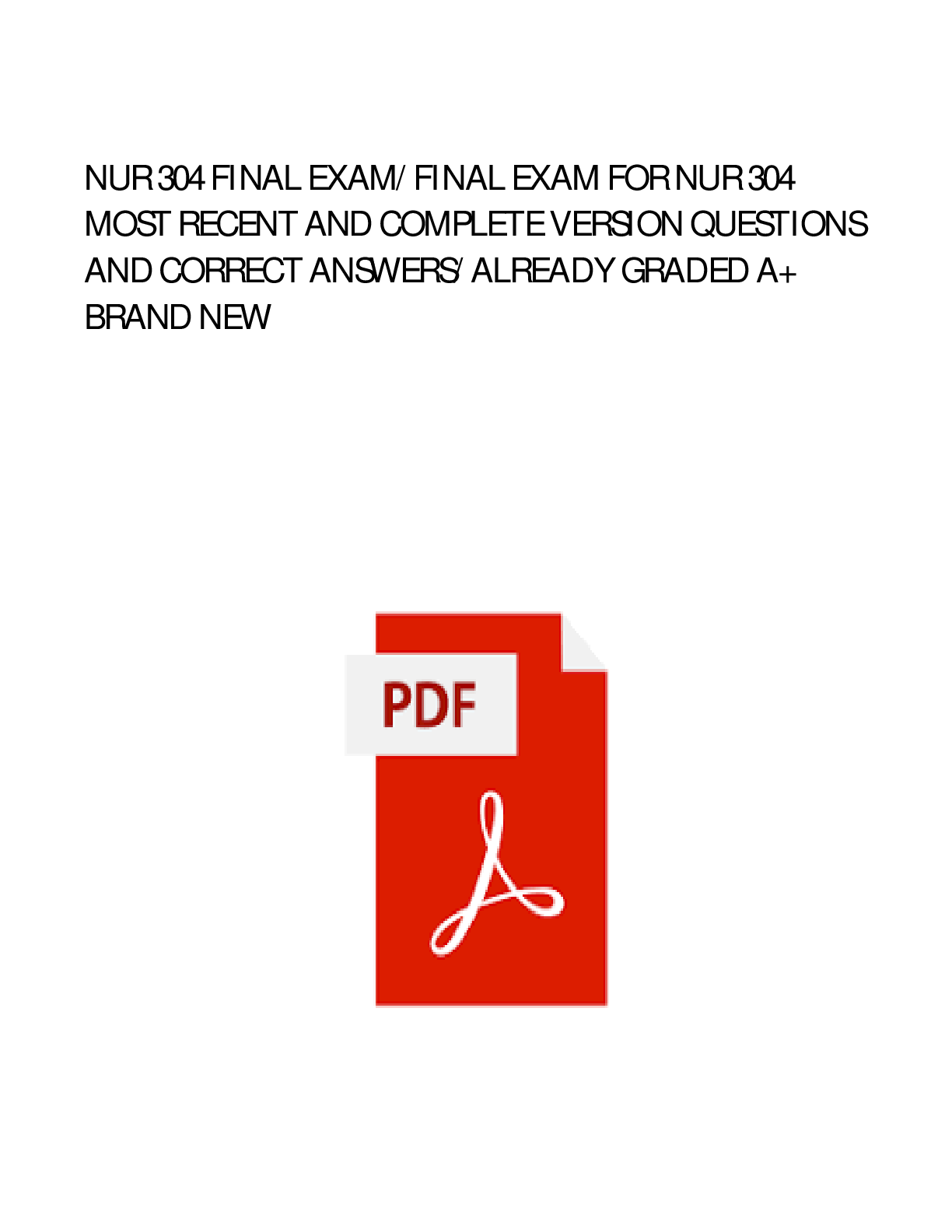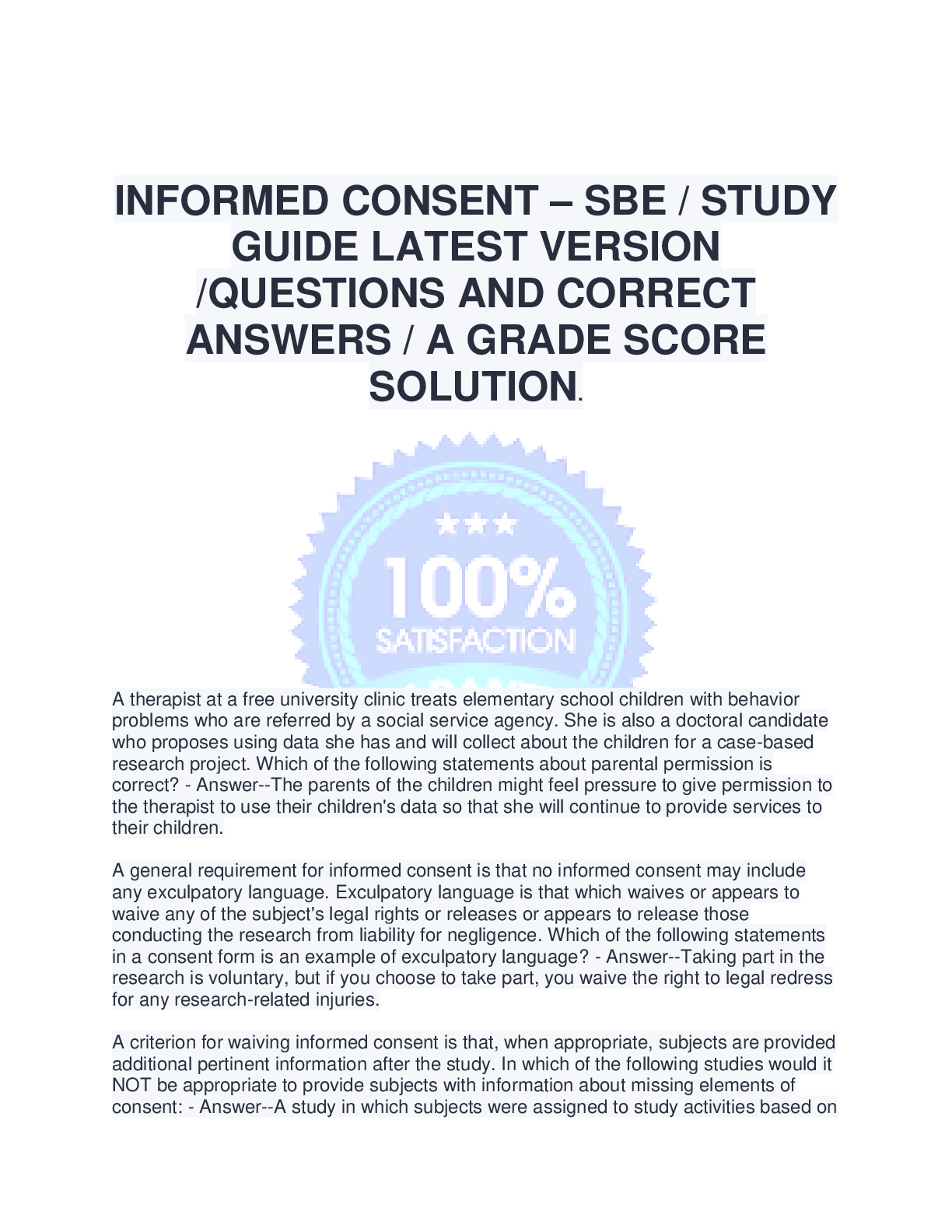*NURSING > FINAL EXAM > ATI OB MATERNITY NURSING CARE QUESTIONS AND CORRECT ANSWERS WITH DETAILED RATIONALES- UPDATED 2024 V (All)
ATI OB MATERNITY NURSING CARE QUESTIONS AND CORRECT ANSWERS WITH DETAILED RATIONALES- UPDATED 2024 VERSION
Document Content and Description Below
ATI OB MATERNITY NURSING CARE QUESTIONS AND CORRECT ANSWERS WITH DETAILED RATIONALES- UPDATED 2024 VERSION 1. A nurse is caring for a client who is at 36 weeks of gestation and who has a suspected ... placenta previa. Which of the following findings support this diagnosis? A. Painless red vaginal bleeding Rationale: Placenta previa is a condition of pregnancy when the placenta implants in the lower part of the uterus, partly or completely obstructing the cervical os (outlet to the vagina). Bright red, painless vaginal bleeding occurs in the second and third trimester. B. Increasing abdominal pain with a nonrelaxed uterus Rationale: Abruptio placenta is separation of the placenta from the site of uterine implantation before delivery of the fetus. When the placenta separates prematurely, there is internal bleeding, which is painful, and the uterus is nonrelaxed or becomes rigid as the separation advances. C. Abdominal pain with scant red vaginal bleeding Rationale: Placenta previa involves minimal to severe bright red vaginal bleeding in the absence of abdominal pain. D. Intermittent abdominal pain following passage of bloody mucus Rationale: Intermittent abdominal pain following passage of bloody mucus is a description of normal labor. The passage of bloody mucus represents the loss of the cervical mucous plug, also referred to as the "bloody show." 2. A nurse is caring for a client who is 1 hr postpartum and observes a large amount of lochia rubra and several small clots on the client's perineal pad. The fundus is midline and firm at the umbilicus. Which of the following actions should the nurse take? A. Document the findings and continue to monitor the client. Rationale: These are expected findings. At 1 hr postpartum, lochia rubra should be intermittent and associated with uterine contractions. The volume of lochia resembles that of a heavy menstrual period. Small clots are common. The nurse should document the findings and continue to monitor the client. B. Notify the client‟s provider. Rationale: These are expected findings, so there is no need to notify the provider. C. Increase the frequency of fundal massage. Rationale: These are expected findings and the fundus is already firm. Increasing the frequency of fundal massage is not indicated at this time. D. Encourage the client to empty her bladder. Rationale: These are expected findings, and the fundus is firm at the midline. If the fundus was deviated, this would be an indication of a distended bladder and the client should be encouraged to void to prevent uterine atony. [Show More]
Last updated: 1 year ago
Preview 1 out of 120 pages

Buy this document to get the full access instantly
Instant Download Access after purchase
Buy NowInstant download
We Accept:

Reviews( 0 )
$41.00
Can't find what you want? Try our AI powered Search
Document information
Connected school, study & course
About the document
Uploaded On
May 23, 2024
Number of pages
120
Written in
Additional information
This document has been written for:
Uploaded
May 23, 2024
Downloads
0
Views
49


